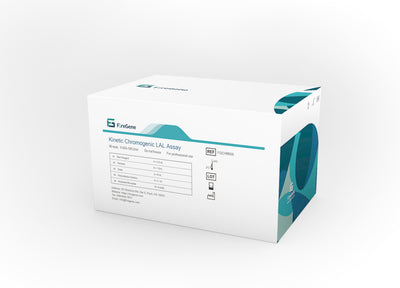Kinetic Chromogenic Endotoxin Test: A Rapid and Sensitive Method for Endotoxin Detection

# Kinetic Chromogenic Endotoxin Test: A Rapid and Sensitive Method for Endotoxin Detection
## Introduction
Endotoxins, also known as lipopolysaccharides (LPS), are toxic components of the outer membrane of Gram-negative bacteria. Their presence in pharmaceuticals, medical devices, and other sterile products can cause severe pyrogenic reactions in humans. Therefore, accurate and sensitive detection of endotoxins is crucial in quality control processes.
## What is the Kinetic Chromogenic Endotoxin Test?
The Kinetic Chromogenic Endotoxin Test is a modern, quantitative method for endotoxin detection that combines the principles of kinetic measurement with chromogenic substrate technology. This test offers significant advantages over traditional methods like the Limulus Amebocyte Lysate (LAL) gel-clot test.
## How the Test Works
The test is based on the activation of the LAL enzyme cascade by endotoxins. When endotoxins are present, they trigger a series of enzymatic reactions that ultimately cleave a synthetic chromogenic substrate. This cleavage releases a yellow-colored compound (p-nitroaniline), which can be measured spectrophotometrically at 405 nm.
The key features of this method include:
– Quantitative measurement of endotoxin concentration
– Continuous monitoring of reaction kinetics
– High sensitivity (typically 0.005-5.0 EU/mL)
– Rapid results compared to gel-clot methods
## Advantages of the Kinetic Chromogenic Method
This test offers several significant benefits:
### 1. Speed and Efficiency
Results are typically available within 15-60 minutes, compared to several hours for gel-clot methods. The kinetic nature allows for real-time monitoring of the reaction.
### 2. Enhanced Sensitivity
The method can detect very low levels of endotoxin (as low as 0.005 EU/mL), making it suitable for applications requiring high sensitivity.
### 3. Quantitative Results
Unlike gel-clot methods which provide only qualitative or semi-quantitative results, this test provides precise quantitative measurements of endotoxin concentration.
### 4. Reduced Subjectivity
The automated measurement eliminates the visual interpretation required in gel-clot tests, reducing operator-dependent variability.
## Applications
The Kinetic Chromogenic Endotoxin Test is widely used in:
Keyword: Kinetic Chromogenic Endotoxin Test
– Pharmaceutical quality control
– Medical device testing
– Water quality monitoring
– Research and development
– Biopharmaceutical manufacturing
## Conclusion
The Kinetic Chromogenic Endotoxin Test represents a significant advancement in endotoxin detection technology. Its combination of speed, sensitivity, and quantitative accuracy makes it an invaluable tool for industries where endotoxin contamination must be carefully monitored and controlled. As regulatory requirements become more stringent, this method is increasingly becoming the gold standard for endotoxin testing.